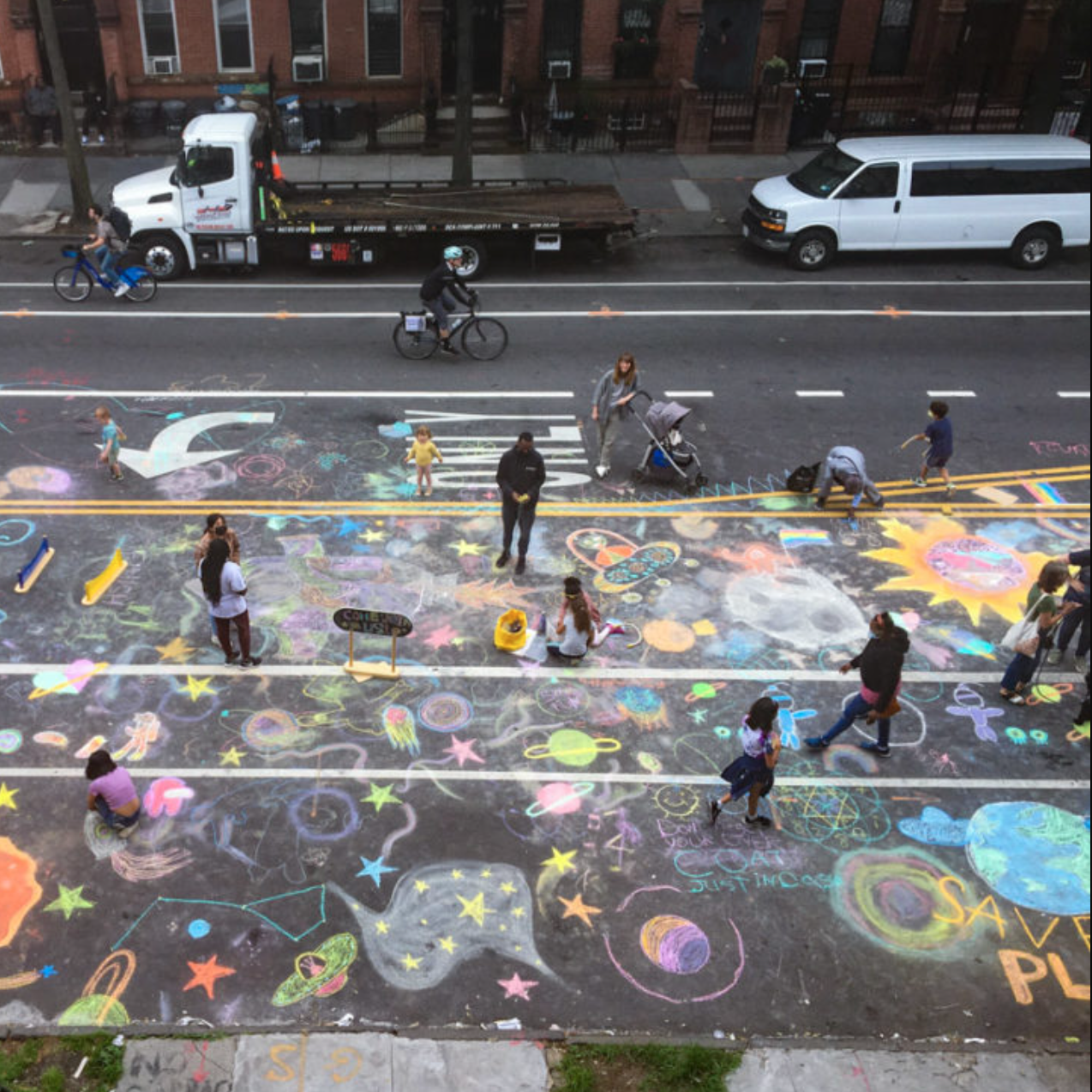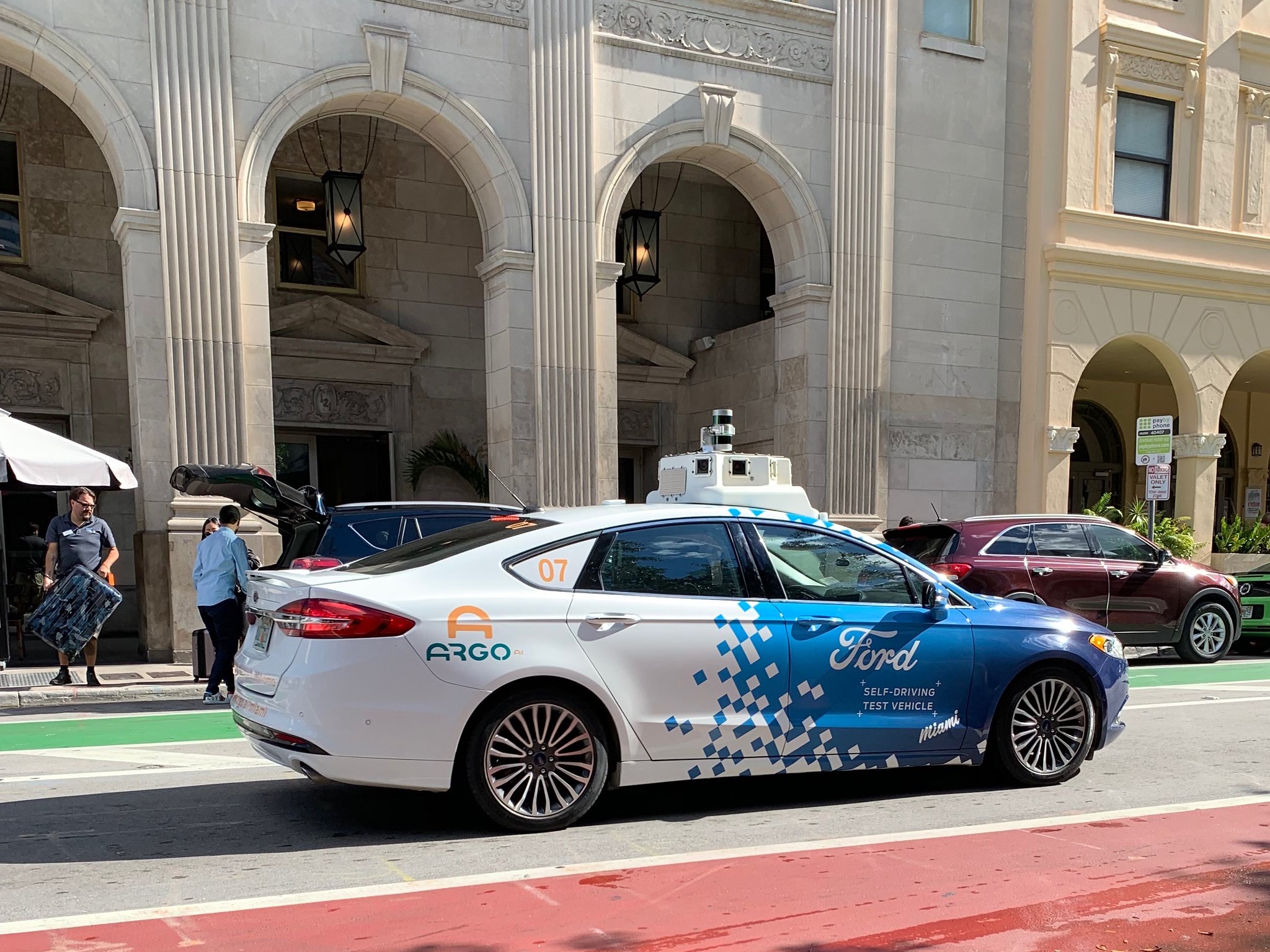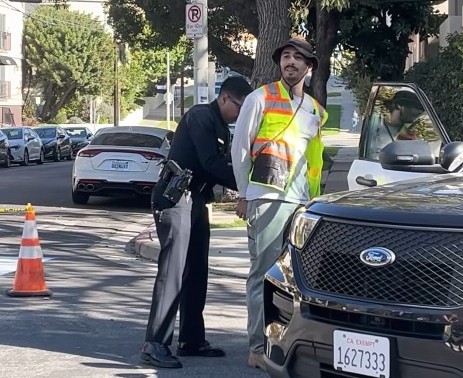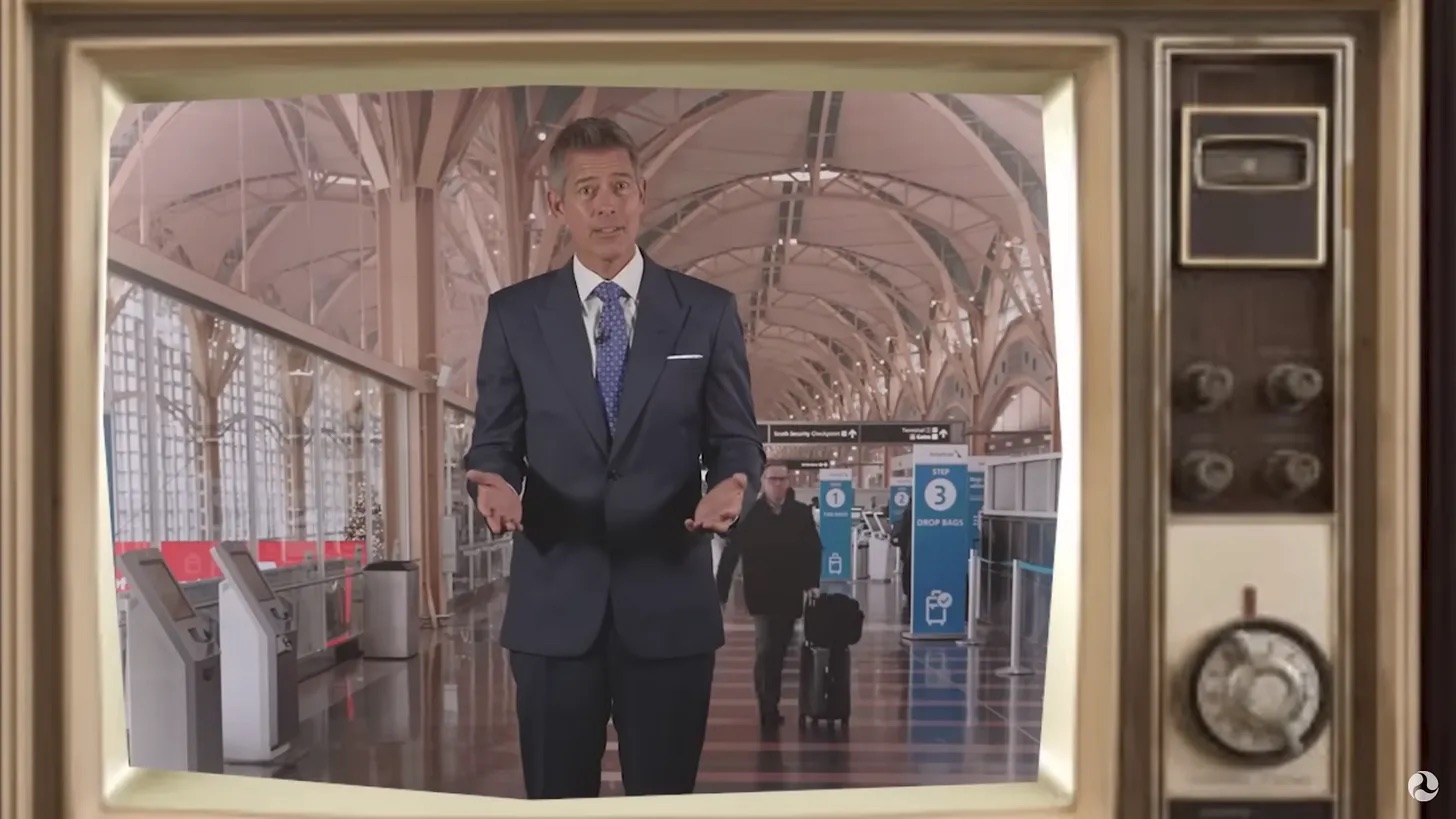Editor's note: A version of this story originally appeared on the New Urban Order and is republished with permission.
Last fall, Philadelphia’s Center City District (CCD) launched Open Streets: West Walnut on a series of Sundays.
One Sunday at a time, the program showed off Center City’s innate vibrancy when it catered to people and not cars. CCD provided some light programming, such as musical acts and dance performances, as well as more casual DIY programming, such as corn hole and ping pong, and a few seating pods. Retailers and restaurants, whose business often slows down on Sundays, could expand their footprint into the street and gain new customers.
It was such a success, the program came back for several encores. And when we met up with CCD’s President & CEO, Prema Gupta, and Director, Planning and Urban Design, Andrew Jacobs, this past Sunday it was the 17th such event.
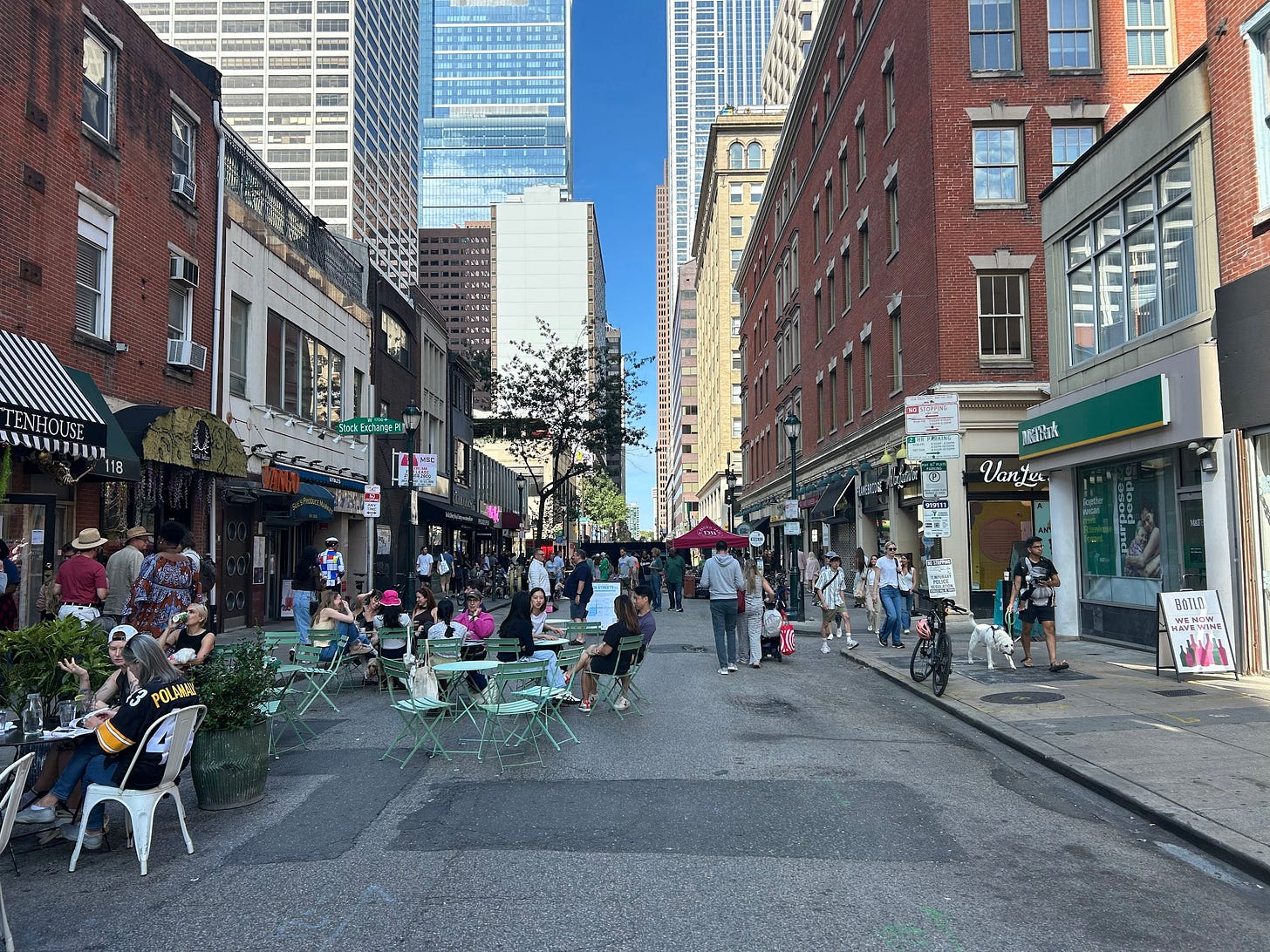
Open streets are a practicable solution to the problems of the post-pandemic city. At a time when people can socialize, eat, and be entertained without even having to leave their homes, open streets show the benefits of actually being present and experiencing a place in real life. They are precisely the antidote to our shut-in culture, to people’s waning sense of trust in one another.
At a time when families are leaving cities for the leafy suburbs, open streets show how kids can play, bike, and run around the city — particularly if we reduce car lanes.
And when cities are struggling to correct the narrative that they’re dangerous and gloomy, it’s nearly impossible to walk through an open street and not feel joy and plenty safe enough.
For Philadelphia’s Open Streets, the primary function seems to be to lift up Center City’s value, but the subtext is also obvious: these temporary street closures show that we can make do with fewer lanes of car traffic.
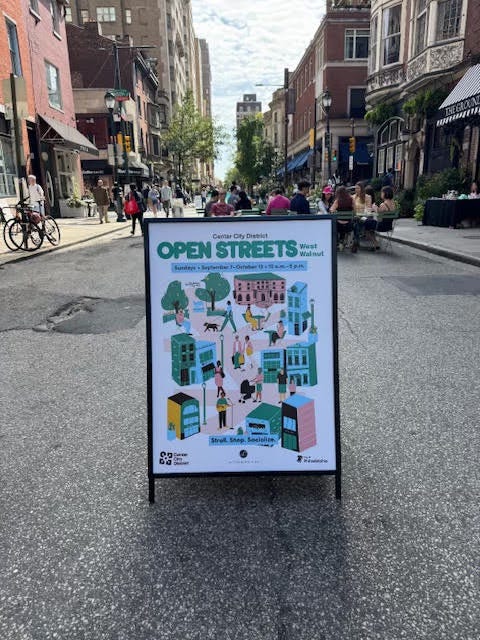
Naturally, I asked Gupta how we might expand Open Streets — to more streets, to more days. But as our group walked over to the Parkway, which has taken decades to achieve incremental improvements in its pedestrian experience and is finally on the cusp of (well, two years from) renovating the drag race around Eakins Oval, I wondered if I was asking the right question at all.
Pivoting to permanence
Temporary street closures are great, and a smart initiative for an organization like Center City District. But they miss out on a number of quantifiable benefits of permanent pedestrianization — the reduction in air and noise pollution, the increase in leisure spending and the boost in real estate values that contribute to the tax base. These temporary efforts are tantalizing, but yet there’s no real playbook to pivot from pop-up to permanent.
There are a number of reasons to think that we have a unique window of opportunity to make more pedestrian streets permanent right now. We shouldn’t squander this moment.
With each iteration of Open Streets, Gupta said her goal is to find ways to lower costs of hosting these events and make them easier to scale. It was a telling comment, as just yesterday another business group, Midtown Village, announced it would not be hosting its fall festival, an annual street fair since 2004 because of mounting costs from city agencies for security.
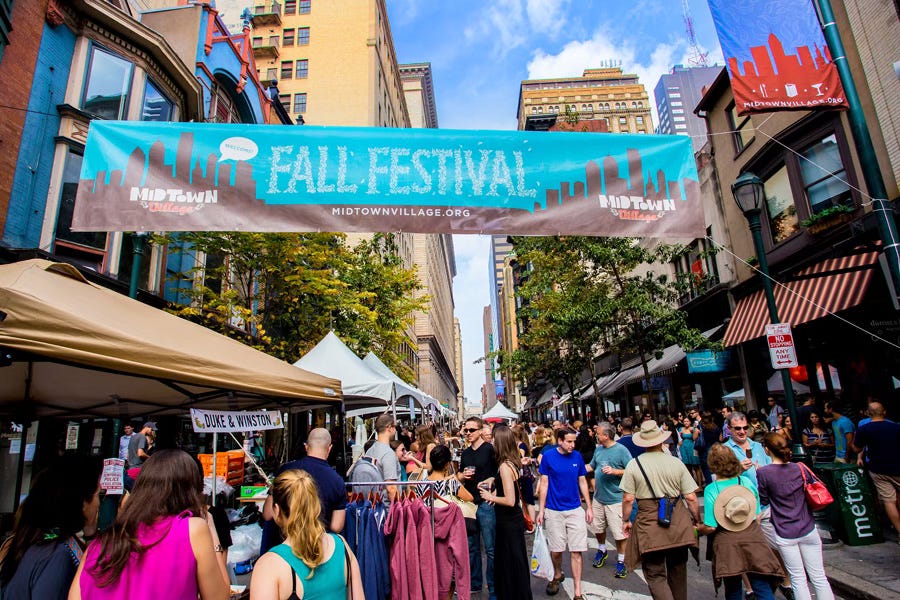
According to the Inquirer:
The Midtown Village Fall Festival is not the first beloved street fair to shut down or consider scaling back, as the cost of services provided by city agencies such as the Philadelphia Police Department or the Streets Department has skyrocketed.
The Northern Liberties Arts and Commerce Alliance canceled its night market in July after the city told them it would cost $24,600 to close three city blocks for food trucks and craft vendors. The organizers of Manayunk Arts Festival and East Passyunk’s Flavors on the Avenue have also considered scaling back operations after the cost of police patrols more than doubled to cannibalize the events’ budgets.
Given how expensive it is to host events —and not just in Philadelphia, but everywhere — it’s possible that there’s never been a better time to consider new permanent pedestrianization schemes. Cities, rather than small organizations, should be creating models that finance and support pedestrian infrastructure.
Timing is everything
In Philadelphia, it’s a longstanding fact that nearly one-third of residents don’t own a car. And yet, practically every streetscape in the city is built to prioritize the two-thirds that do.
While many of the people who do not drive are too young or old, can’t afford a car, or have a disability that prevents them from driving, there are indications that the people who are choosing to live in cities and choosing to go car-free are aligning. According to a recent piece in Bloomberg:
The share of [New York City] residents who are college graduates — an imperfect but useful proxy for the kind of people who might choose to go car-free — was 42.5% in 2024, up from 39.2% in 2019 and 32.1% in 2006.
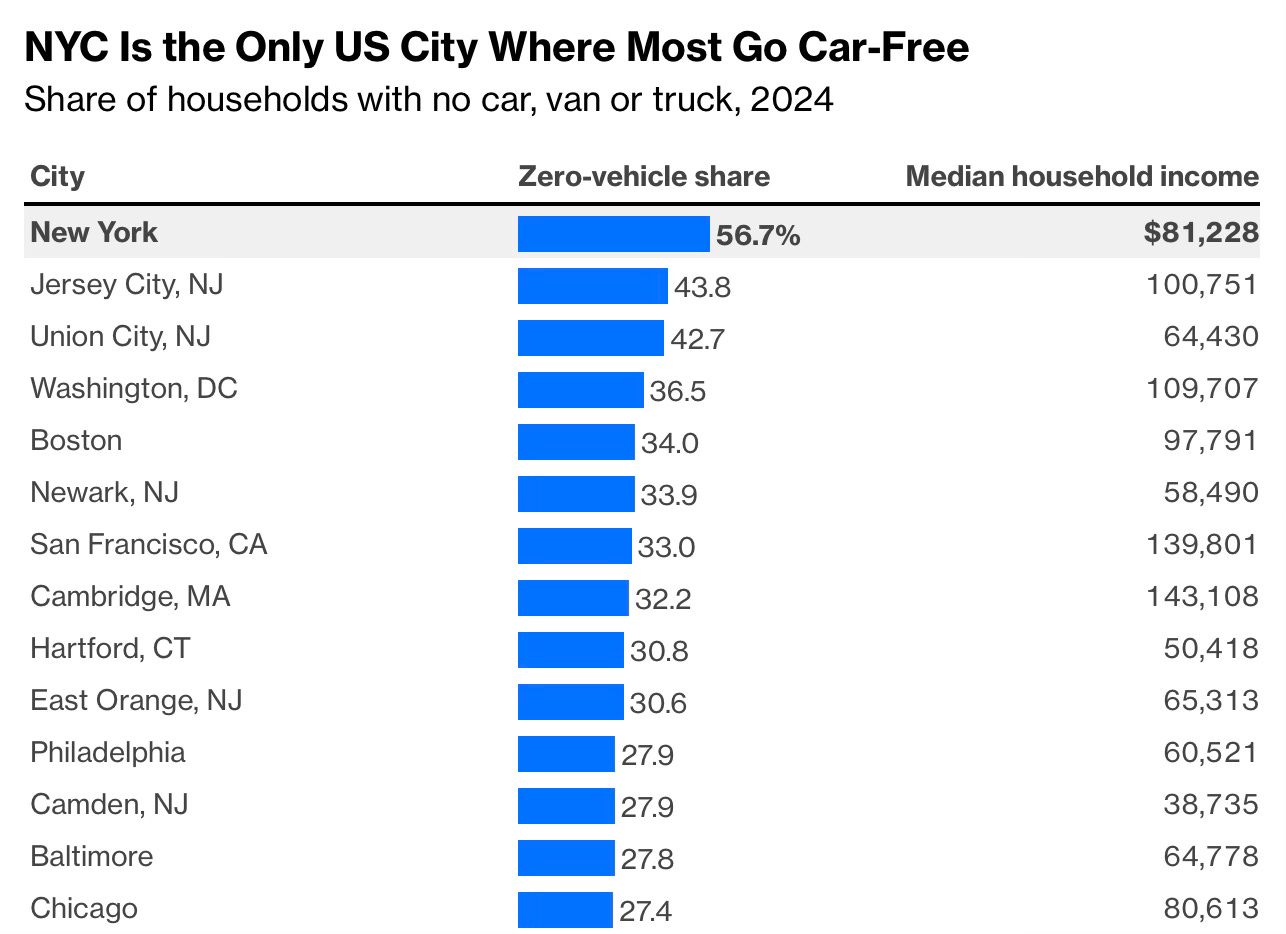
And though these trends are encouraging, the truth is that many people who do own cars also want a quieter city with cleaner air. You don’t have to give up your car to value the public realm and want to push for more toward safe, beautiful pedestrian infrastructure.
At the same time, Waymo began training on Philadelphia streets this summer.
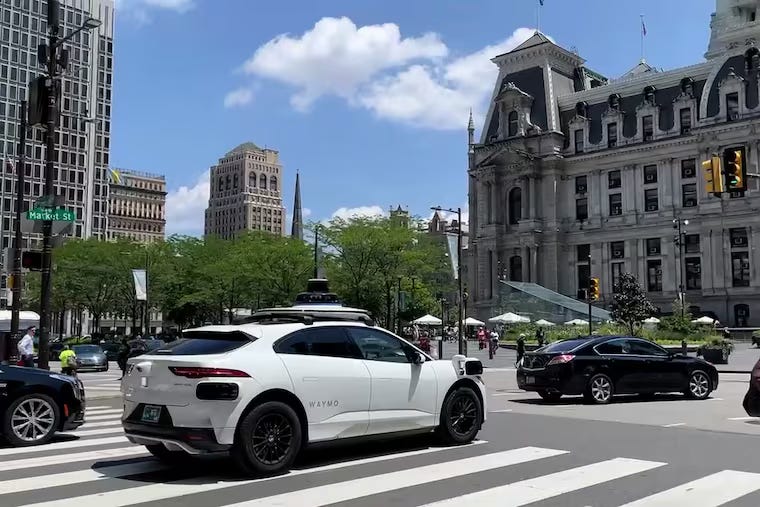
As autonomous vehicles are now coming to the East Coast, there will be an opportunity to rethink our street curbs and the amount of space allotted to parking private vehicles in the coming decades. As Darrell West wrote for Brookings earlier this year:
Autonomous vehicles will create opportunities to redesign cities with pedestrians—not cars—as the central focus. Contemporary cities devote vast amounts of space to streets, parking, gas stations and auto repair businesses. But with fewer personally owned vehicles and increased reliance on autonomous vehicles, city planners can explore more creative layouts that prioritize walkways, malls, and entertainment zones. These redesigned spaces could feature designated pickup and drop-off points for autonomous vehicles and ride-sharing services, reducing the need for expansive roadways and parking lots.
In the beginning, autonomous vehicle companies might welcome these changes — but they might also later become antagonists of street closures that limit where they can do business. Again, we have a window of opportunity.
Pilots aren’t policy
After we experienced Open Streets, our group walked up to Sister Cities Park to meet Nick Anderson, Executive Director of the Parkway Council, to learn about planned renovations coming to the boulevard. As Nick explained, the Parkway has really been a work in progress ever since it was initiated more than 100 years ago. For the past 30 years, the City and partners such as CCD have been incrementally improving the area, often using pilots such as temporary street closures and a summertime park on the Eakins Oval parking lot as a way of building public enthusiasm for further transformation.
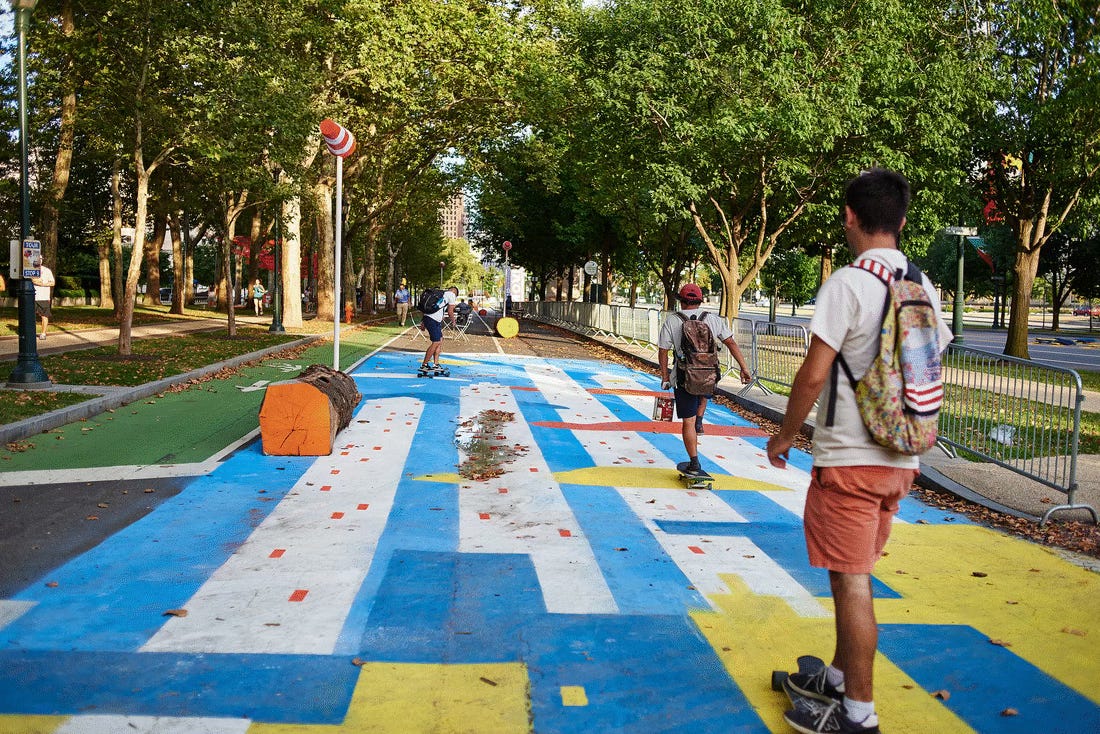
Now, a new action plan for the Parkway, drawing from ideas proposed in 2022 as part of the Reimagining the Ben Franklin Parkway process, is scheduled to be released in a matter of weeks, fittingly called Parkway to Park.
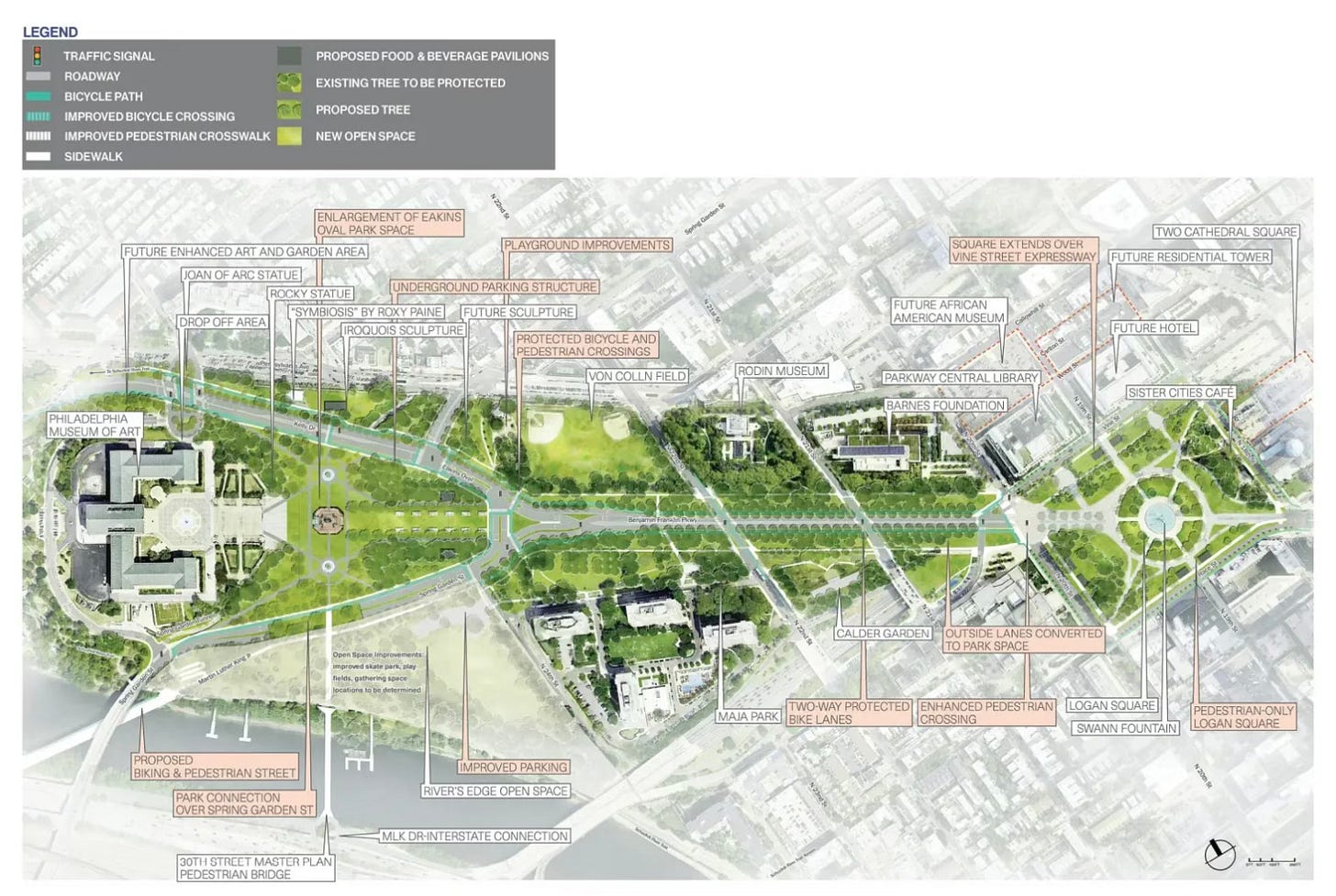
Yet, ultimately this work is made possible when public funding, private philanthropies, city officials, and nonprofits are aligned. The pilots get the public comfortable with change, enhance the area in the meantime, but they’re not policy.
Learning from YIMBY
The experience of YIMBYtown is still fresh in my mind. I was so impressed by the YIMBY movement’s focus not just on winning hearts and minds, but on winning legal battles, changing zoning, and finding the right financial incentives to build more housing. As I wrote in my recap of the conference, it’s clear the transportation movement has a lot to learn here. So does the public space, placemaking and pedestrianization movement.
Right now, you either need to have an enlightened mayor and empowered economic development agency to pedestrianize streets— or you need civic sector organizations to run costly pop-ups that only scratch at the full benefits of permanently pedestrianized places. There needs to be a third way, where new laws and incentives actually align with redesigning our streets.
This kind of local control is increasingly critical when it’s clear that the federal government cannot be relied upon for funding. On Monday, the Trump administration announced it was canceling funding for a series of projects in cities from Boston to San Diego that it deems are “hostile” to cars.
We can have nice things, too
Just like in Philadelphia, this past Sunday, London, England also hosted a temporary street closure — except theirs was a preview of the planned permanent pedestrianization of Oxford Street.
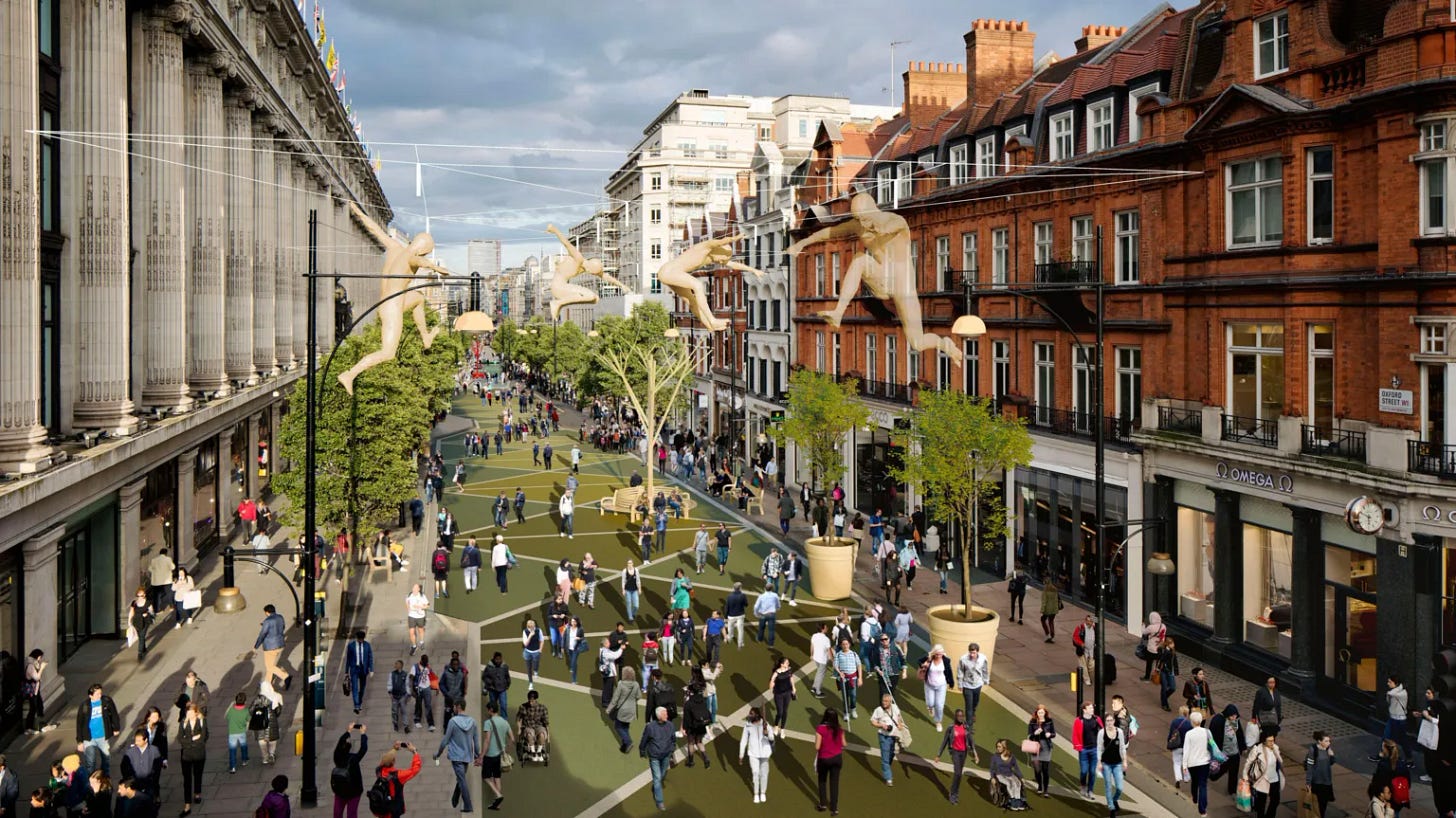
One might assume that pedestrianization is easier in other countries. But that’s not always the case. Mayor Sadiq Khan has been trying to pedestrianize Oxford Street for a decade, first proposing the idea in 2016. He has similarly run into obstacles in the public, private, and civic sectors.
But much like the country is flexing government control over land to build housing, the city is exploring new strategies to take control over Oxford Street. According to the BBC:
The solution for Sir Sadiq could be the creation of a Mayoral Development Corporation (MDC). It would give a mayoral body control of the area in terms of planning and development. It would be unprecedented to use one in a central London semi-residential location. Previously it has only been used to convert industrial areas at the Olympic Park and Old Oak Common.
Just as the YIMBY movement exposed how an array of laws and codes are keeping people from the housing they want, we need a movement that challenges the current status quo of how our cities manage our streets.
